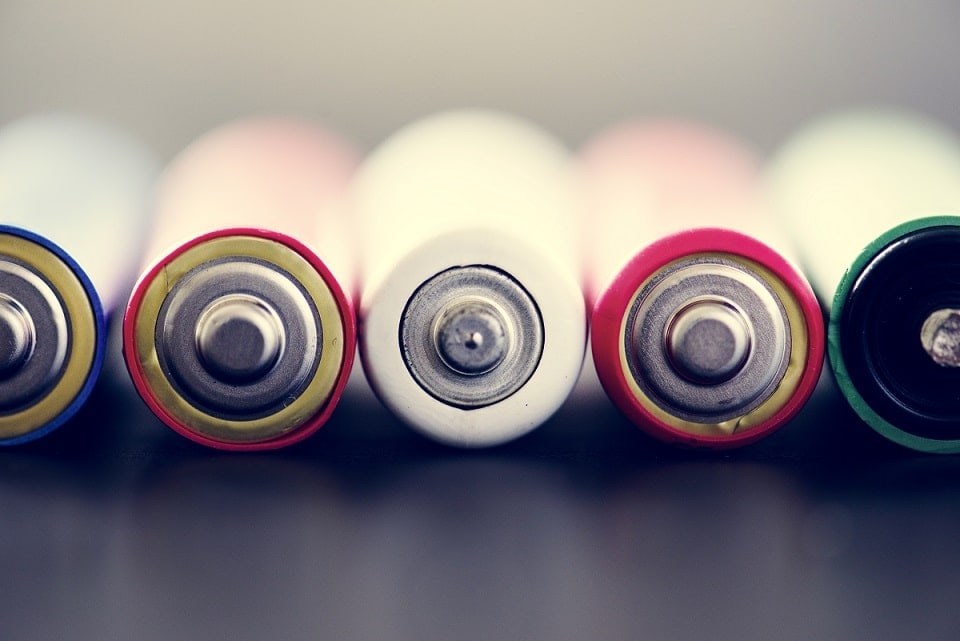
A brief history of battery technology
For so many of us, batteries and accumulators play a vital role in our everyday lives. From smartphones to torches to solar lamps in the garden, all these devices are equipped with batteries and accumulators. But what is the history of the battery and who invented the battery?
Who Invented the Battery?

Batteries have long been an integral part of our lives but when was the last time you really thought about who invented them and why? Every invention has its conception and subsequent process of development, the results of which we still benefit from today in the 21st century. Even though the battery has evolved over the centuries, it still relies on the original discovery from the 18th century by one Mr. Alessandro Volta, the inventor of the battery.
Alessandro Volta was aided by Luigi Galvani who, through his experiments with frog legs (which lead to the theory of "Galvanism") gave Volta the original idea for the device. Galvani connected frog legs with copper and iron, causing the legs to twitch. Galvani, at that time, believed it was a kind of "animal electricity," with the frog acting as the capacitor (very simply explained: a passive electrical element that can store electricity). However, Volta was certain that there must be something else behind it and thus, the foundation for the world's first battery was laid.
For him, the frog was more like an electricity indicator, signalling that electricity was flowing. Since Volta was determined to be proven right, he continued his research and then invented the so-called Voltaic pile which consists of copper plates and zinc plates stacked alternately on top of one another.
Even at these early stages of development, Volta and Galvani understood the importance of the invention and the possibilities it could lead to. The first stable power source had been invented, upon which many more great inventions have been built, and which is ultimately the mother of our modern day batteries and accumulators.
Any brief history of battery technology has to mention both Volta and Galvani because without Galvani's invention (Galvanism) and the resulting dispute, Volta probably would never have been driven to build his Voltaic pile and invent the first battery. However, when it comes to the question "Who is considered the inventor of the first battery," we can confidently say Volta.
The name Volt for electrical voltage is in fact derived from Volta but sadly he did not live to enjoy this honour as he passed away approximately 70 years before the name came to used at the age of 82.
When Was the Battery Invented?

Volta was born in 1745 and had already invented things of significance, such as the electrophorus, by the age of 30. In 1780, Galvani conducted his experiment with twitching frog legs, giving birth to Galvanism. This led to years of dispute with Volta, which, in turn, resulted in the invention of the Voltaic pile almost 20 years later. This means the answer to the question, "when was the battery invented?", is 1799/1800, but the beginnings date back almost two decades earlier.
The electric generator (which allows a hamster wheel to generate electricity) was only invented in 1830, so the first battery was a momentus invention at that time.
Based on the Voltaic pile, many other great inventions were made. Electrolysis was discovered, and electric telegraphy took its first steps. Arc lamps generated arcs of light, thanks to the Voltaic pile, and in 1839, the first electric boat was operated in St. Petersburg.
In medicine, too, the invention was intended to be used, for example to distinguish between the dead and the seemingly dead. Unfortunately, this did not work as well as desired. It would take decades for this method to be further developed and improved.
Of course, the first battery had a number of weaknesses, which were recognized and improved on over time. Almost simultaneously, the trough battery was invented by William Cruickshank, which, in turn, was used to obtain direct current. But by 1836, the trough battery was relegated to history with the invention of the Daniell cell, an advanced battery based on a zinc half-cell and a copper half-cell.
The first half of the 18th century was a time of intense and exciting innovation from which we are still benefitting today.
History of Lithium-Ion Battery

While the battery has been around for at least 200 years, the rechargeable battery is much younger and could be considered its great-great-great-great-grandchild. In 1979, American John Bannister Goodenough invented the lithium-ion rechargeable battery. He turned 100 on July 23, 2022, and at that time, leveraged the research at the Technical University of Munich. The history of the lithium-ion battery also had its origins in Munich, where non-rechargeable lithium batteries had been investigated since 1970. Goodenough's results were later published, but it wasn't until 10 years later that academics continued to research and experiment at Oxford University. Their efforts ultimately succeeded with the invention of the rechargeable battery.
Other types of rechargeable batteries such as the lead-acid battery (also called lead collector) did in fact already exist, but these were heavy, lacked power, and, above all, were not as durable as the Li-ion battery.
Since demand determined supply and this battery was not in high demand, it took another 10 years until the Japanese used a lithium-ion rechargeable battery (Sony), making the battery marketable. The battery at that time had a capacity of 1,200 mAh, while today's models can offer 6,900 mAh. For comparison, common rechargeable batteries on the market have between 2000-3000 mAh.
Almost everyone has a large type of battery at home with a power bank, with which they charge their smartphones and mobile devices every day. Trail cameras can also run on batteries as do MP3 players and Walkmans.
The largest batteries are in America with a capacity of 1,200 MWh, whereas the largest battery in Europe is the Stocking Pelham Facility (Hertfordshire, UK), with a capacity of 50 MWh and a peak power of 50 MW.
A wide variety of smaller batteries are available for day to day use at Electropapa. By simply browsing our diverse selection of vhbw batteries, it is easy to switch to larger and fresher batteries. Especially if you need a new phone battery or a powerful battery for your video camera.
Incidentally, the German word for a reachargeable battery is "Akku" abbreviated from "Akkumulator" (accumulator), and the Latin word "accumulator" translates to collector. This brings us to the end of our brief history of battery technology. We hope you now feel more informed about the development of an innovation which has proved vital to our day to day lives in the modern world.



